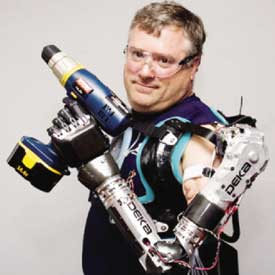
Today, February 4, 2009 is World Cancer Day. Head over to the website for the Internation Union Againt Cancer to view a striking video and to find out more about their campaign to help promote a healthy, active lifestyle. It seems I've never stopped to take note of World Cancer Day before, but this year it seems more than appropriate.
My Perspective
Cancer has touched my life before on several occasions, and was the cause of demise for more than one of my grandparents. I've followed Lance Armstrong's illness and subsequent world cycling domination and campaign from the start. I always purchased the breast cancer stamp, as if my 8 cents would offer some benefit. Still, I never really felt that I was effected by cancer, and I knew somehow I was lucky for that.
This past summer, my mother was diagnosed with breast cancer. She's been undergoing treatment and is doing well with a good prognosis, but through this process I've gotten a stark view of how truly tough cancer is, even for someone with a good prognosis. From the uncertainty during the diagnostic process to the painful, agonizing chemotherapy and the endless small battles one must endure, cancer is hard. My mother even lost her job due to her illness. Cancer rocks your world in a bad way, and its claws reach beyond the cancer patient into their family and friends. When one person suffers with cancer, many more suffer alongside. I think that's how it should be.
I've had other friends, and family members of friends, who are experiencing first hand interactions with cancer this year. For some reason it seems breast cancer is all around me this year. My friend and blog developer uber-geek, Jessica, has made a web page to keep friends and family apprised of her mother's progress that is ongoing.
TogetherPink.com. She comes home from the hospital today!
To all my friends, family and aquaintances who are dealing with, or have dealt with cancer on some level, my thoughts are with you.
My Physical Therapist Perspective
One thing I've noted throughout my mother's treatment is the lack of partnership between the oncologists, surgeons, and physical therapists. As I sat at a chemo treatment with my mother I observed the suffering, weakened bodies all around me and I felt they needed formal guidance. Physical therapists can help maintain strength, mobility, descrease pain through motion, and even improve respiratory health and function through a variety of methods. We need to be right along side cancer patients and their physicians. We can do great benefit for these people. This is not happening yet on the scale that it should be. There needs to be a seamless partnership that serves as a non-obtrusive resource for patients suffering the effects of cancer.

Integration of oncologic physical therapy is improving and physical therapist education includes more of this every year, but still no clinical specialization exists for the oncologic phsyical therapist. Very few among us are considered experts in this area, though the ones that are considered such are very good.
I will be more aware of this opportunity to help those suffering with cancer. I will begin a process to make myself more educated in this field, and I might even join the
Oncology section of the APTA. For now, my efforts are best realized by offering this post and a couple links:
What are you doing to help? I think if you just stop and notice, it is a start.
Good luck with your continued recovery, Mom!
ERIC


 Dean’s DEKA Arm is being developed as part of the DoD”s
Dean’s DEKA Arm is being developed as part of the DoD”s  American Physical Therapy Association (APTA) President, Scott Ward, posed an interesting question in
American Physical Therapy Association (APTA) President, Scott Ward, posed an interesting question in Augusta, Georgia is unique for a number of reasons. Perhaps you notice the heaping piles of azaleas, or that golf course, or the downtown with much character and few people. Perhaps you notice that the city is “well laid out with wide and spacious streets”, as
Augusta, Georgia is unique for a number of reasons. Perhaps you notice the heaping piles of azaleas, or that golf course, or the downtown with much character and few people. Perhaps you notice that the city is “well laid out with wide and spacious streets”, as  In conjunction with the Special Olympics
In conjunction with the Special Olympics
